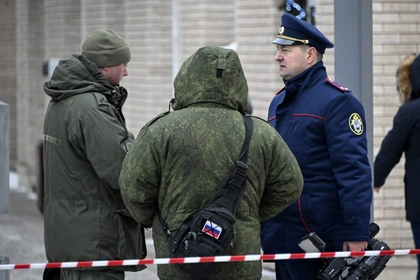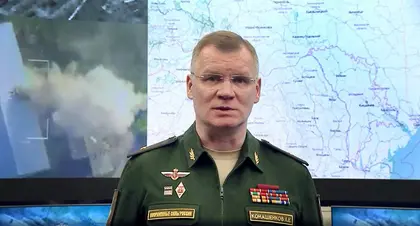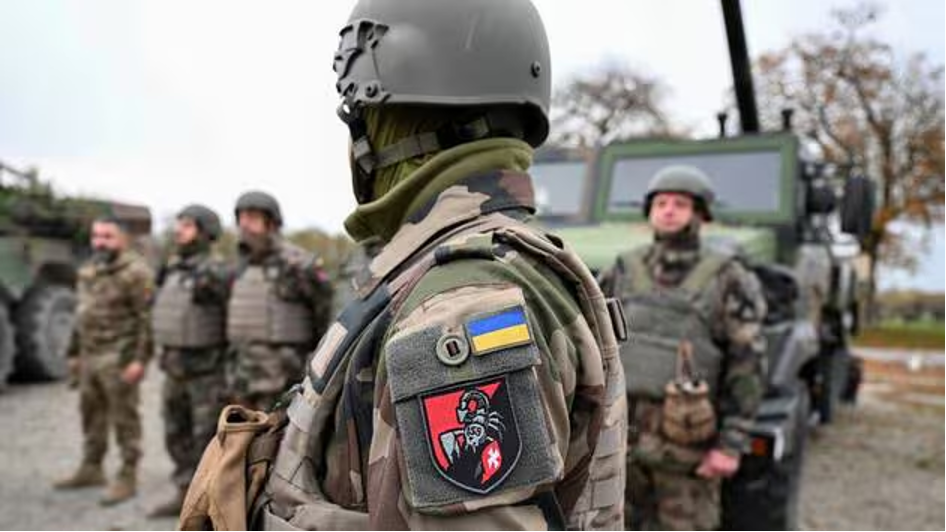If Russia’s defense ministry is to be believed, Ukraine was dealt a devastating blow yesterday after a missile strike on a barracks killed more than 600 of its troops in the east of the country.
Let me guess – Russia’s defense ministry is not to be believed…
JOIN US ON TELEGRAM
Follow our coverage of the war on the @Kyivpost_official.
Early indications would suggest that yes, this is indeed the case, and it is in fact yet another poor propaganda effort to convince the Russian public that their armed forces are doing far better than they actually are.
- View the latest war in ukraine update in the Kyiv Post’s news stories released today.
- Look at the most up-to-date Ukraine news that came out today.
So, what actually happened?
We do know there were Russian missile strikes in the city of Kramatorsk in the Donetsk region of eastern Ukraine. Pavlo Kyrylenko, head of the Donetsk regional administration, said on Sunday that Russian forces had launched seven rocket attacks "after midnight".
He added that "an educational institution, an industrial facility and a garage cooperative" had been damaged and said there had been no casualties.
What did the Russians say about the strikes?
The Russian version of events is very different – a statement from the defense ministry said it had used “reliable intelligence” to target two buildings in which 1,300 Ukrainian troops were staying.
“As a result of a massive missile strike on these temporary deployment points of Ukrainian army units, more than 600 Ukrainian servicemen were destroyed,” it said.
Did Russia provide any evidence to back up its claim?

Suspect Detained in Moscow Bomb Attack That Killed Chemical Weapons General
Absolutely none but fortunately several international journalists were in Kramatorsk and were more than willing to check it out.
Russia’s statement was quite detailed and named the two buildings it was targeting and in which it claimed more than 600 people died – a dormitory at a site called College No.47 and another affiliated with College No.28.
Italian journalist Daniele Raineri visited both buildings and posted pictures of the aftermath of the strike on Twitter.
He wrote: “I’m checking… dormitory 28: the missile missed the target, made a big hole in the soft terrain and didn’t touch the buildings around.
“… dormitory 47: the Russian missile missed the target, again. There’s a big hole in front of the building, the place is empty. That’s all from Kramatorsk.”
Reuters journalists saw the exact same scene and interviewed locals who described loud explosions but nothing else. “There's nothing else to tell you, said one. “Just a normal day.”
Ukraine's armed forces rejected Russia's claim about the Kramatorsk attack, saying it was “an information operation of the Russian defense ministry.”
“This information is as true as the data that they have destroyed all of our HIMARS,” Sergiy Cherevaty, spokesman for the eastern group of the Ukrainian armed forces, told the Suspilne media outlet.
What about all the bodies?
There aren’t any. There weren’t even any signs that large numbers of troops had been using the buildings as barracks.
So what’s going on?
The key to what is actually going on here is in the reason Russia gave for the attack, which it described as a "retaliatory strike" following Ukraine's New Year's Eve missile salvo in the eastern Ukrainian town of Makiivka.
Moscow said 89 of its soldiers died in this attack but Ukrainian sources as well as many Russian war correspondents say the death toll was closer to 400.
We know for certain that this attack did actually happen as even the smaller figure of 89 represents the biggest loss of life from a single strike officially reported by Russia since the start of the invasion in February.
Why lie about the attack in Kramatorsk if it’s so easy to disprove?
The thing to remember here is that western journalists and news agencies aren’t the intended audience – it’s solely aimed at the Russian public.
The attack in Makiivka was a huge embarrassment for the Russian army, it was too big to hide and public anger quickly grew into a massive blame game.
And it’s not the first blame game to erupt since the full-scale invasion last February – the Russian public was told the “special operation” to “denazify” and “demilitarize” Ukraine would be a swift one that would result in glory for the nation.
Only, things haven’t gone as planned for the Kremlin so every time they’re forced into a humiliating retreat – and there have been many – Russia’s propaganda machine goes into overdrive in a desperate attempt to convince the people that everything is totally fine.
Russia doesn’t really care what foreign media reports about the Kramatorsk site as it will simply hope it can rely on disseminating its version of events through the carefully controlled Kremlin-backed media system.
Anything else I need to know?
As well as giving a little insight into the thinking behind the Russian propaganda system, it’s also worth noting what this incident and the Ukrainian strike on Makiivka say about the current state of affairs of both armed forces.
The Makiivka strike represents two things – unbelievably poor military practices by the Russian army which crowded together hundreds of troops in unprotected buildings which may have also been used at the time to store ammunition, and accurate and reliable intelligence gathered by Ukraine.
Ukraine is believed to have stopped housing large numbers of troops together after a deadly Russian missile strike on a base in western Ukraine way back in March killed dozens.
The fact Russia has essentially had to invent a deadly attack instead of being able to carry one out highlights the ever-growing disparity between the two sides in Ukraine’s favor.
You can also highlight the text and press Ctrl + Enter






